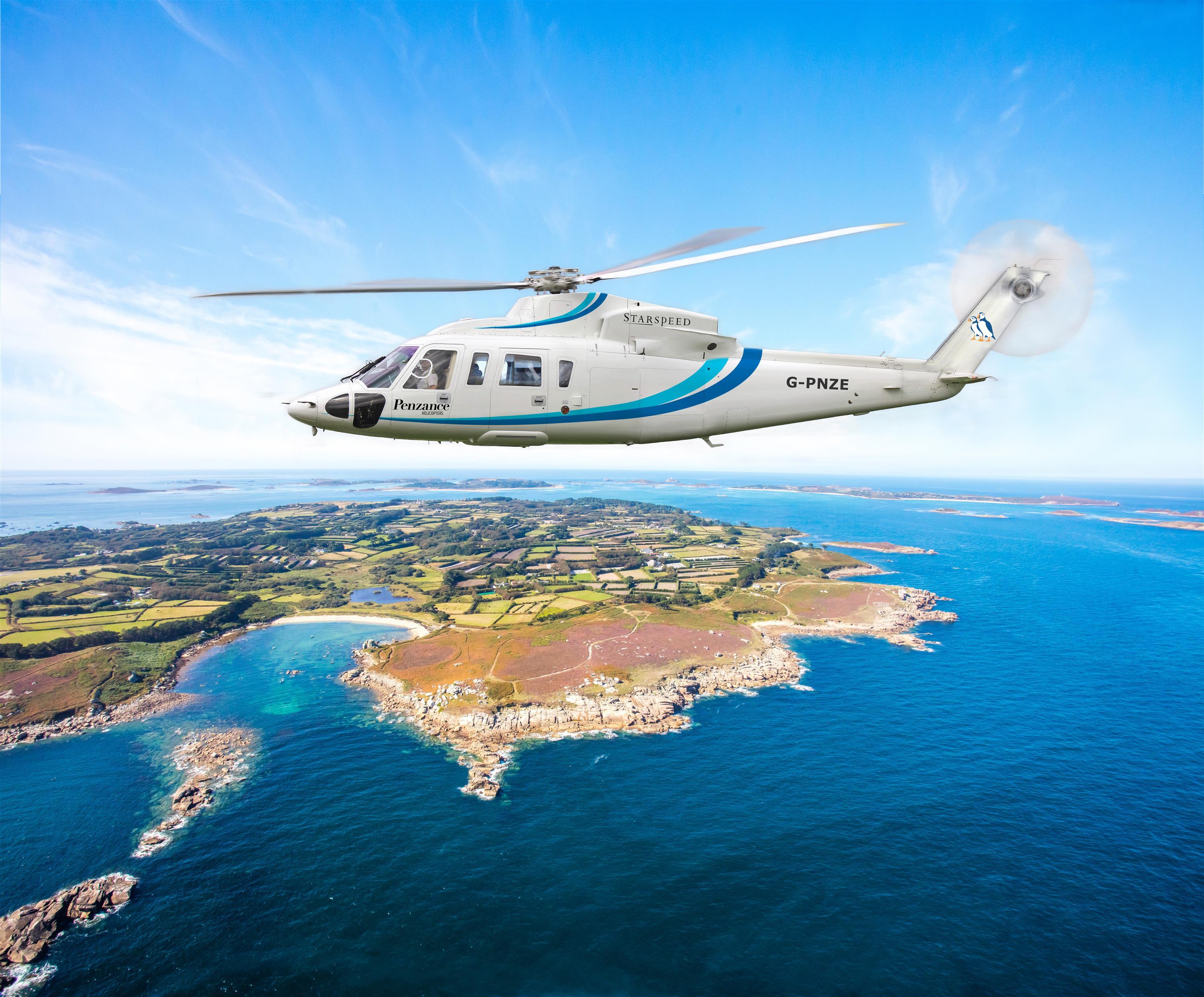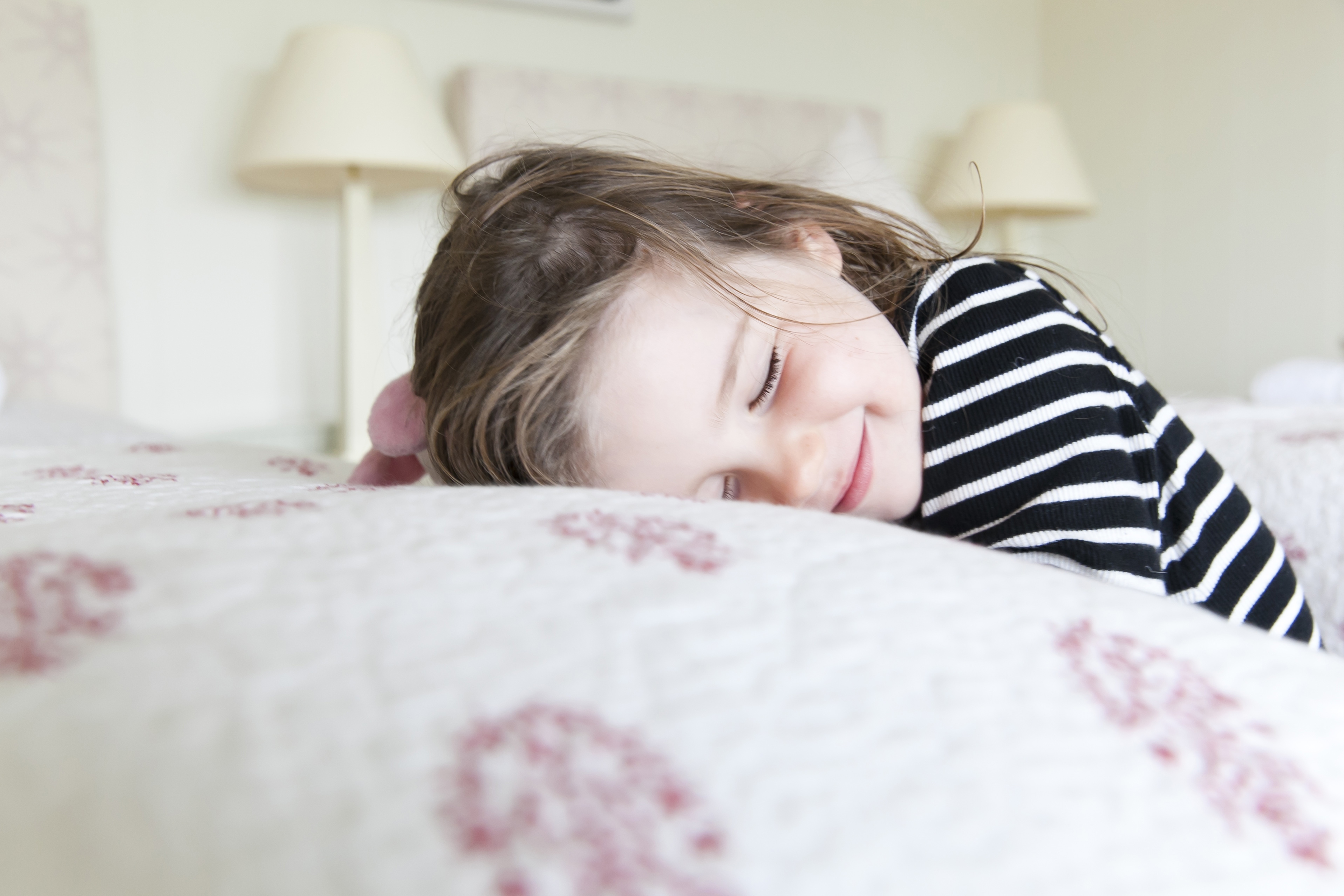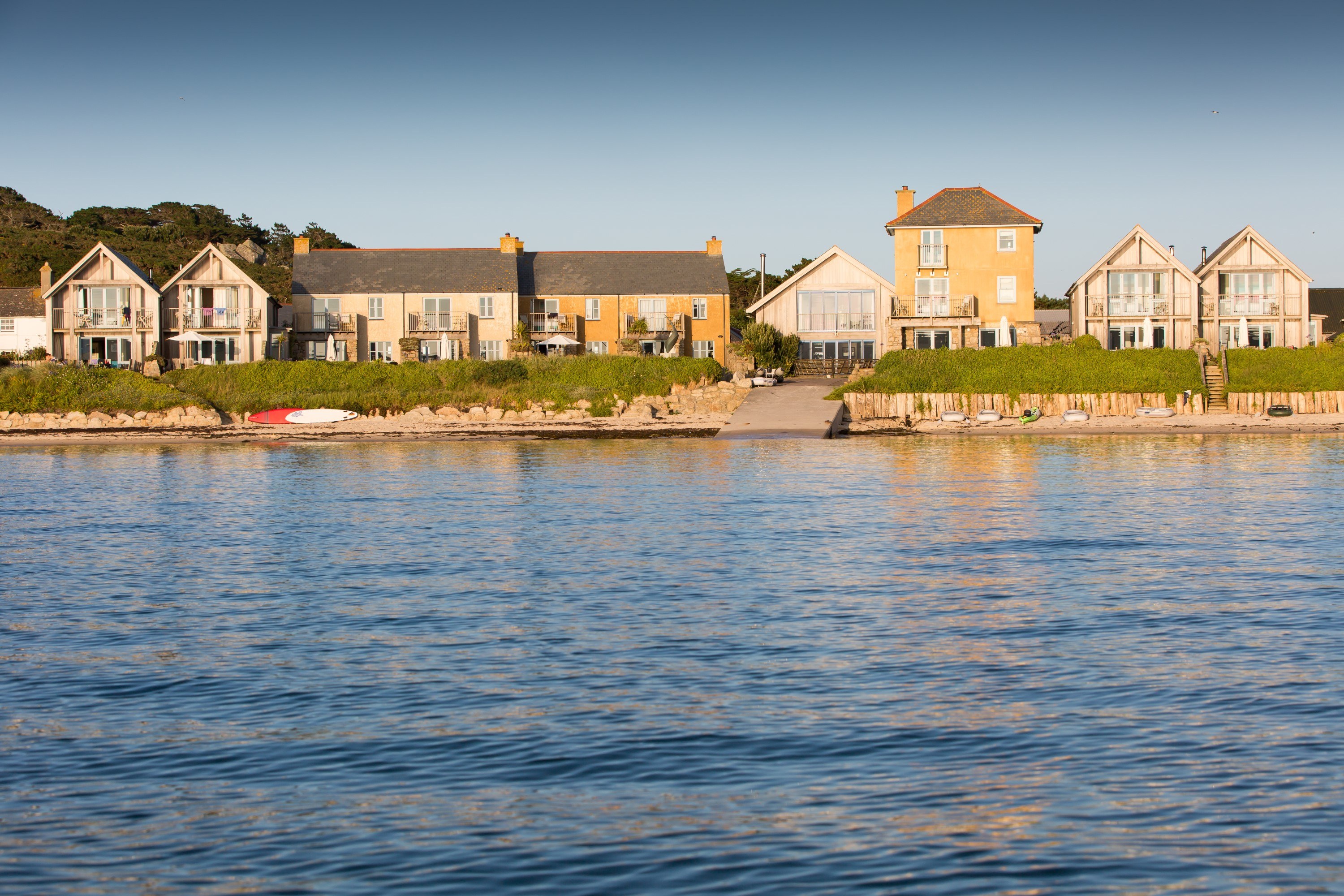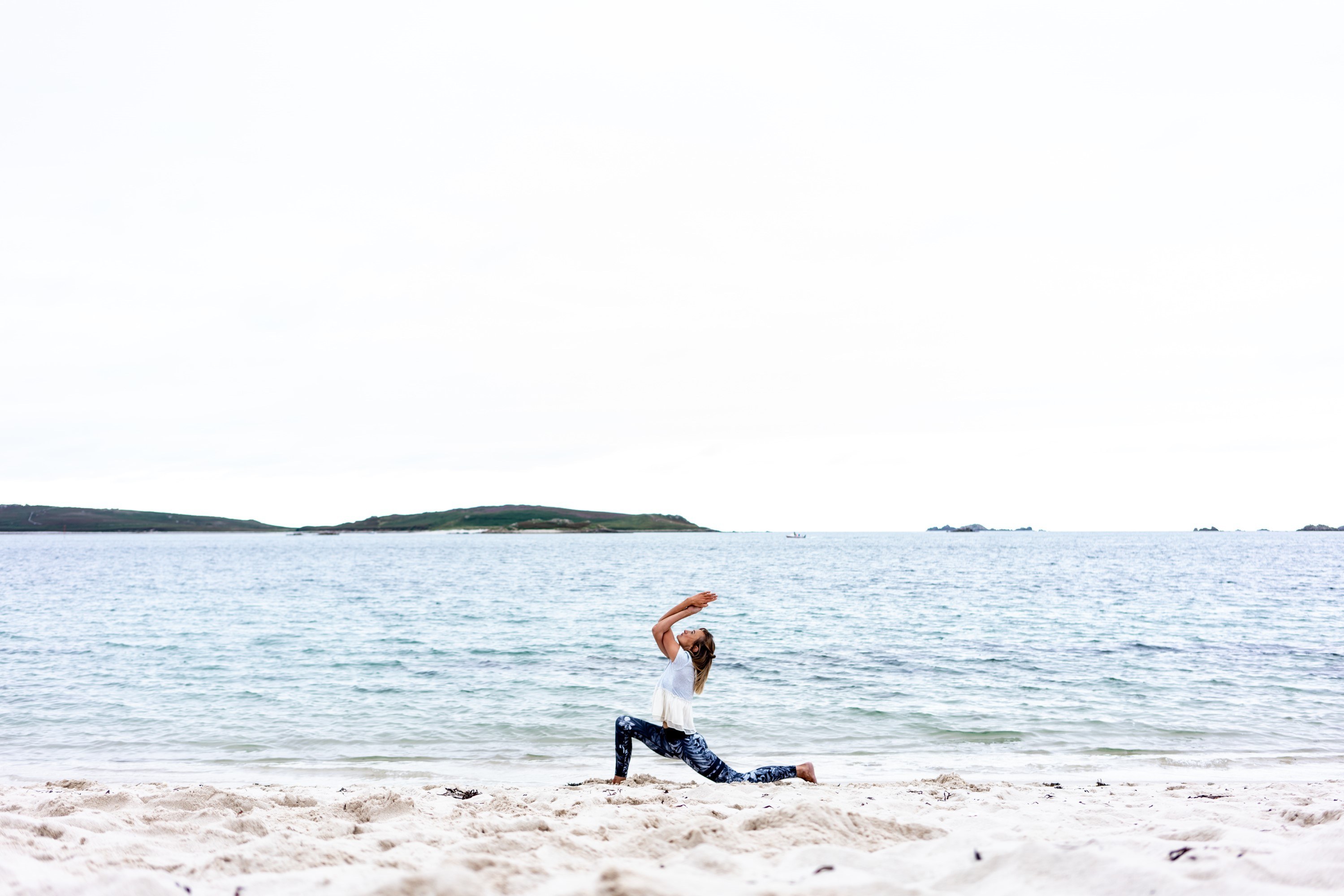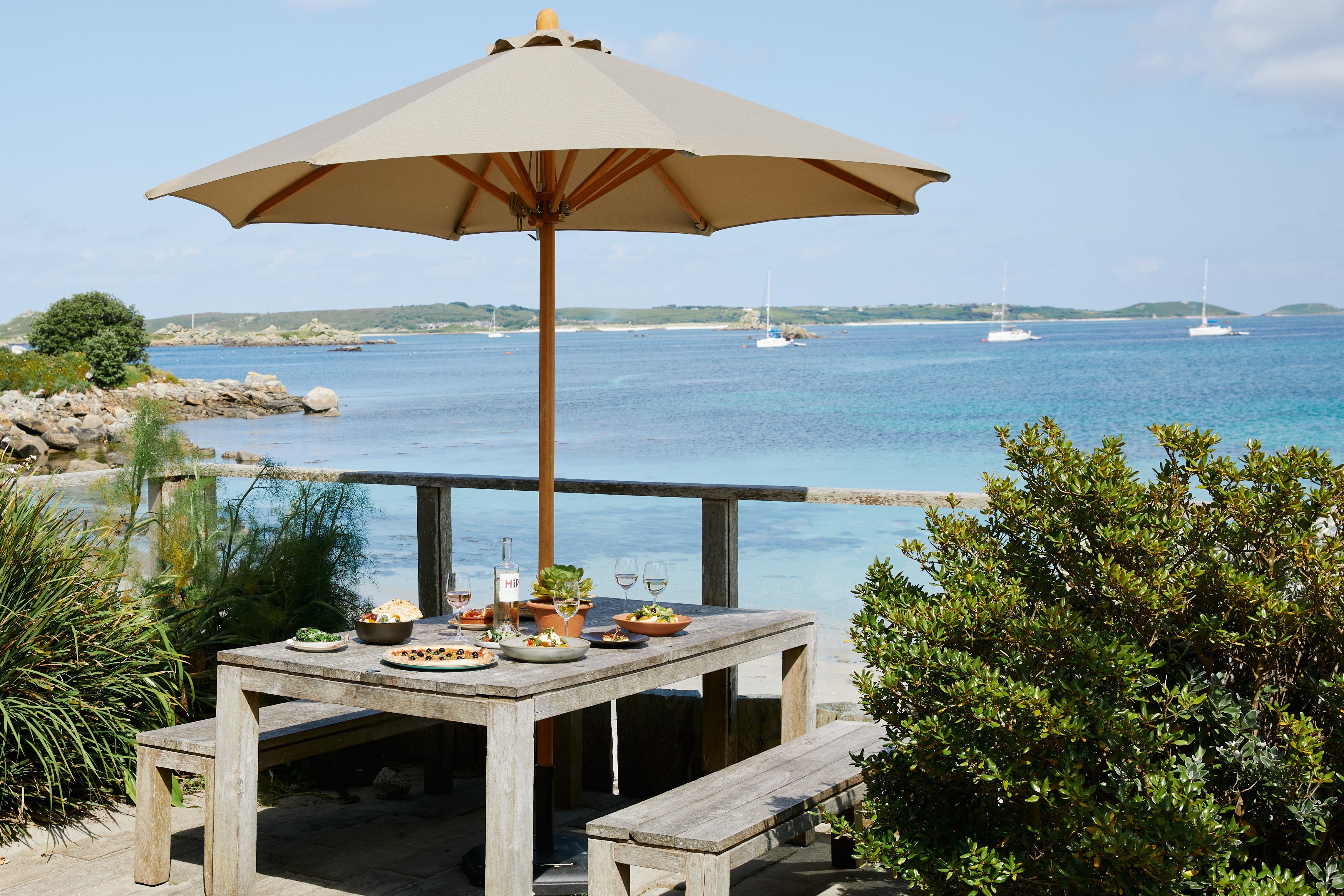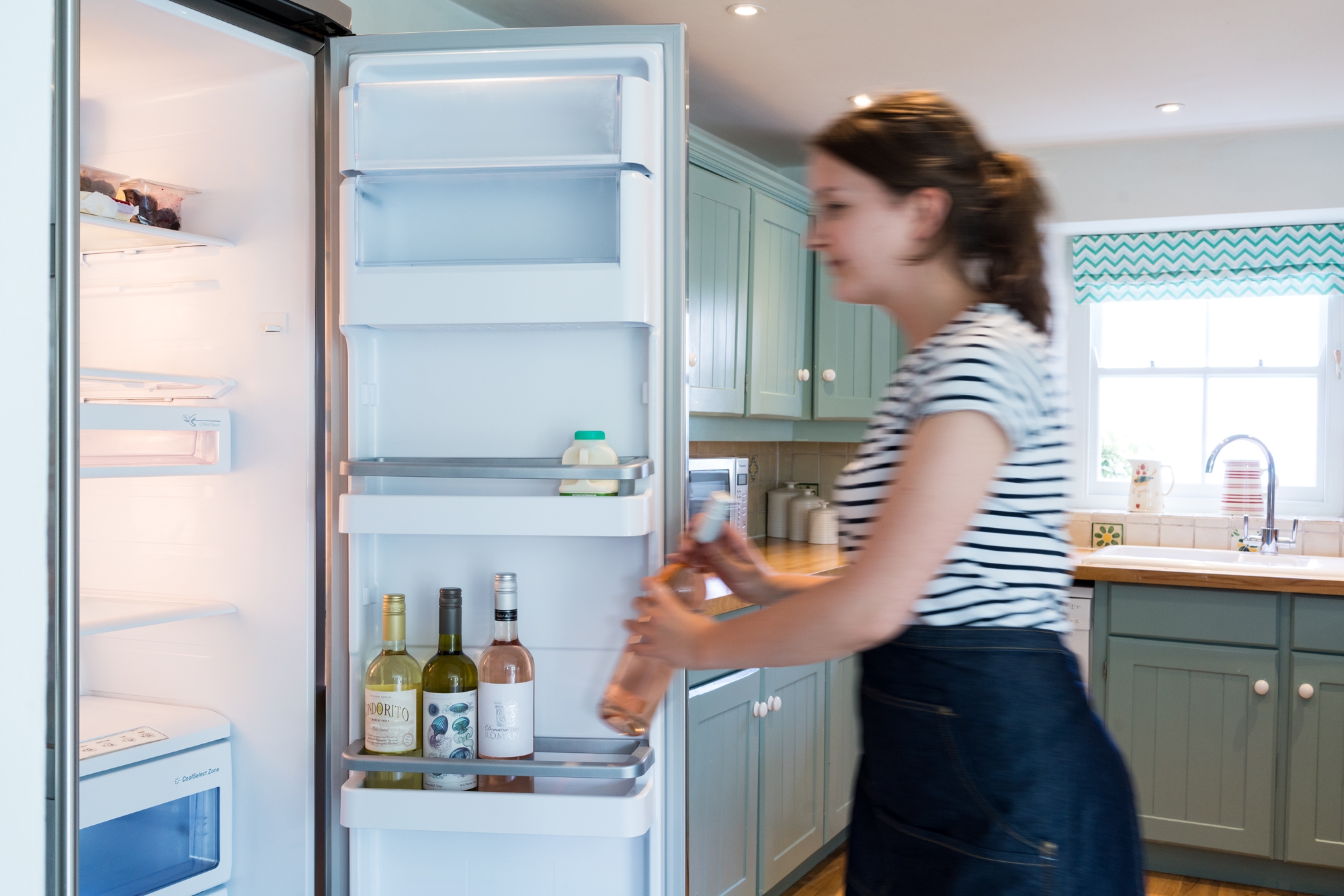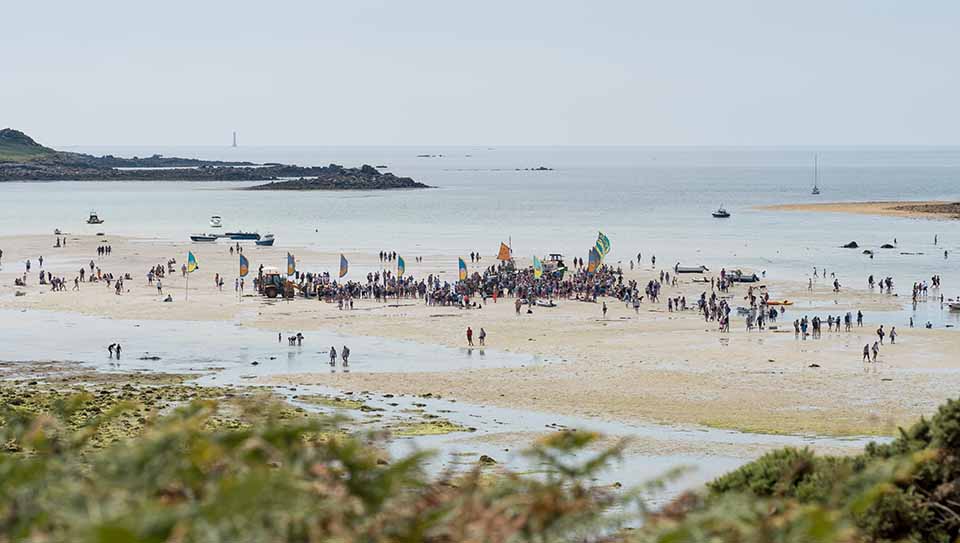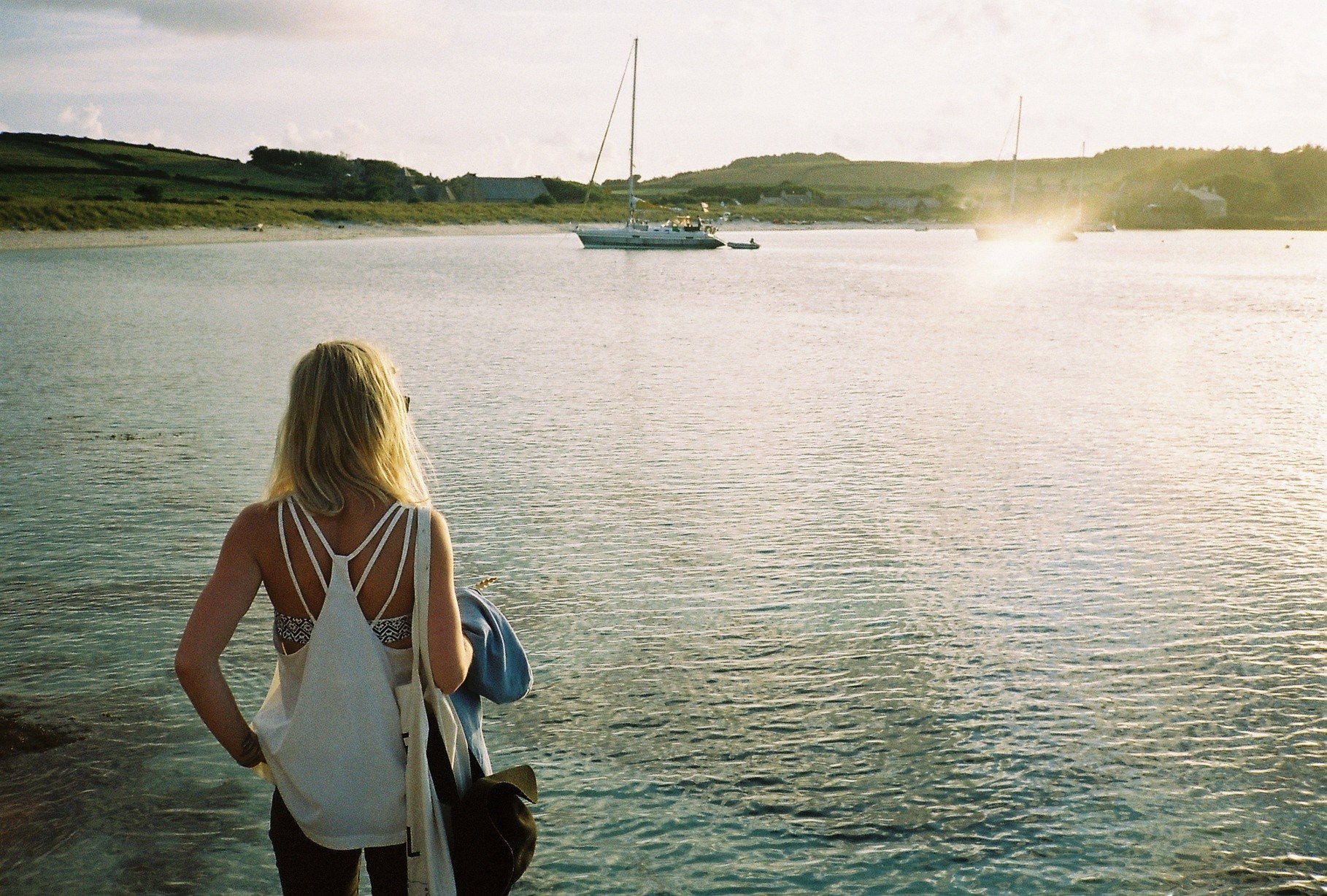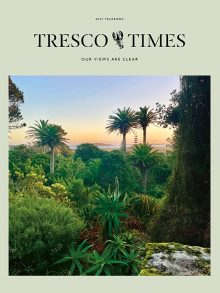Another Man’s Treasure
Islander and Abbey Gardener Emma Bagnall-Oakeley is on a mission: piece by piece, her thought-provoking art is creating a wave of change...
“I love watching people’s reactions when they see my artwork,” says Emma with a playful grin. “As they get closer their expression changes until you can actually see the penny drop. It’s the same every time.”
Emma is putting together a new piece: a seahorse. Like most pieces of art, it has been painstakingly built up, its multiple layers and component pieces meticulously positioned. Unlike most pieces of art however, Emma’s medium includes a crimson shotgun cartridge, a tangle of emerald fishing net and a Lucky Buddha beer bottle cap.
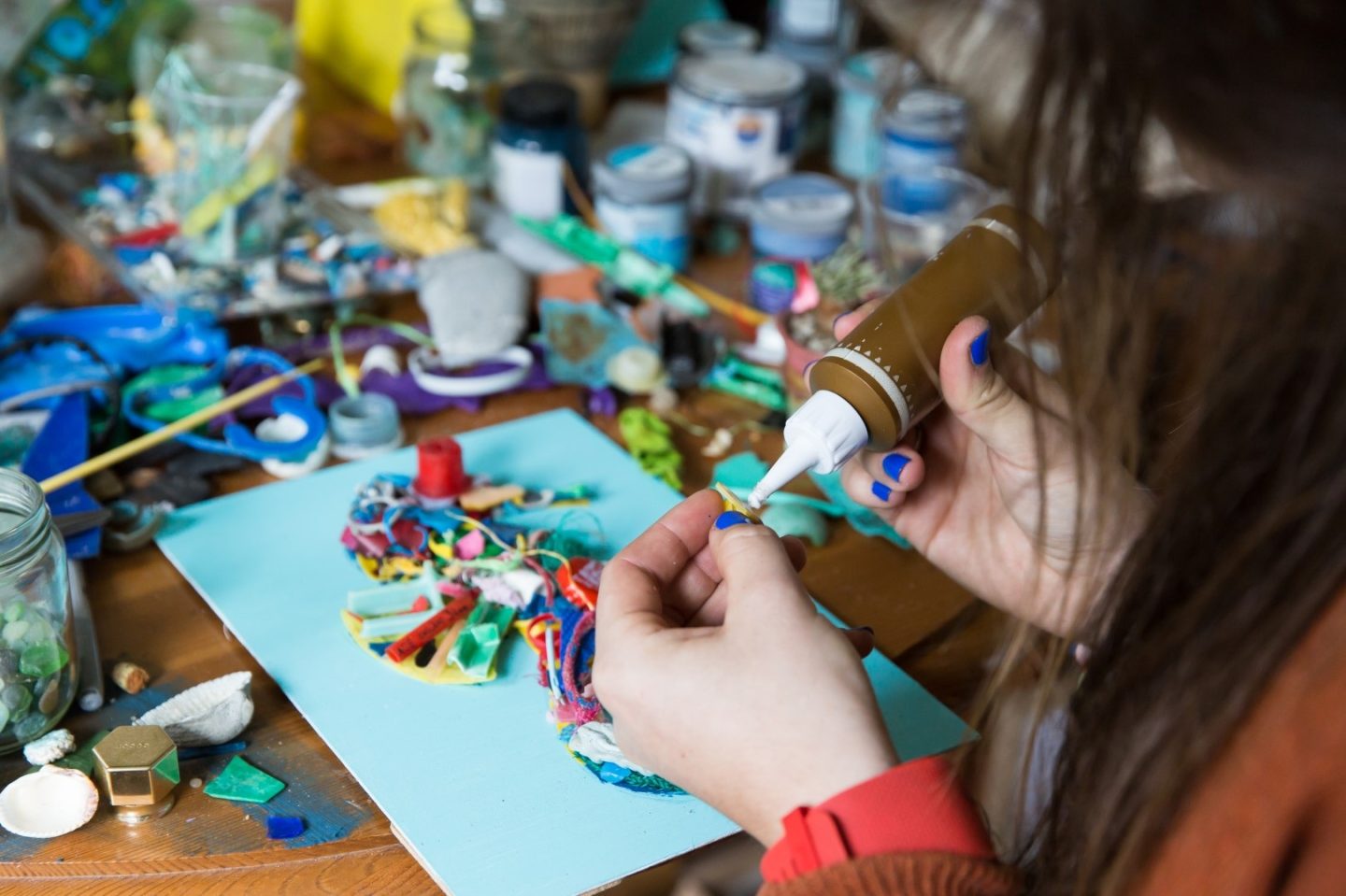
Emma’s kitchen table in her cosy Tresco cottage is her easel and is quite unlike any I have seen before; it’s covered in rubbish. She won’t mind me saying that either; Emma wholeheartedly embraces the idiom ‘one man’s trash is another man’s treasure’.
Jon, Emma’s partner who works alongside her in the Abbey Garden, glances across the room. “Don’t encourage her,” he laughs, rolling his eyes.
Spread across the tabletop are tubes of glue, jars of seaglass, bags of brightly coloured shells and pots of ceramic fragments. There are also boxes and boxes of more unusual artistic media: old lighters, toothbrushes, bottle tops, buttons, fishing net mesh, pen lids, keys, combs and even a BIC razor. Flotsam and jetsam fill the table, spanning the spectrum: buttercup yellows, coral reds, cobalt blues, jade greens.
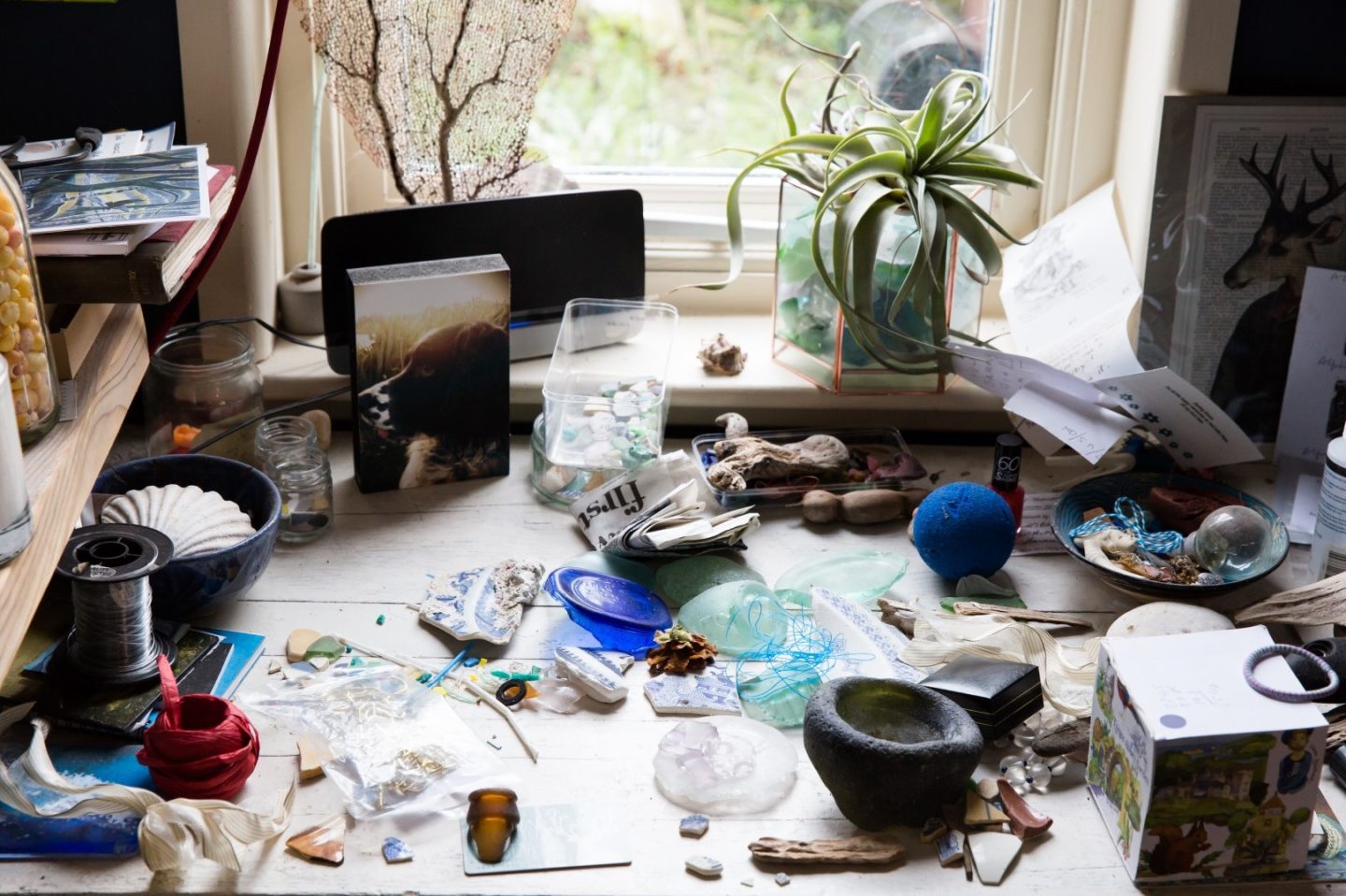
“Marine debris is a fact of modern life,” says Emma. “We’re fortunate here on Scilly as our beaches and seas are pretty much pristine with very little marine debris. Islanders and visitors love and care for our natural environment.”
The seas around the Isles of Scilly are largely protected by a number of Marine Conservation Zones, in recognition of the importance of their exceptional diversity of habitats and species.
“Marine debris doesn’t respect international borders though,” Emma continues. “We do get some debris washing up on the beaches here, particularly after a storm. Much of it has probably travelled thousands of miles and might have been in the sea for decades before it finally makes landfall.”
As she speaks, Emma adds the finishing touch to the seahorse: a small, pearly button. Someone, somewhere in the world, is looking for that. I wonder where it has come from, how long its journey has been…
The seahorse is beautiful and all the more beguiling for its complexity and intricacy. Every constituent part has a story to tell, a history. “I think I’ll call this one Wilbur,” she says. Emma carefully turns the piece over, takes a pen and writes on the back. I read over her shoulder:
“Wilbur” Created using material collected on the beaches of Tresco to highlight the plastic in our ocean. By 2050 it is predicted there will be more plastic than fish in the sea. We need to cut plastic out of our everyday lives and see it as a last resort. REFUSE, reduce, reuse, recycle.
“You could think of marine debris as a depressing thing,” Emma says. “But there’s a really positive feeling now; I think we’ve finally hit that tipping point where people have woken up.
“When you get people like Sir David Attenborough talking about the issue, people really start to listen.”
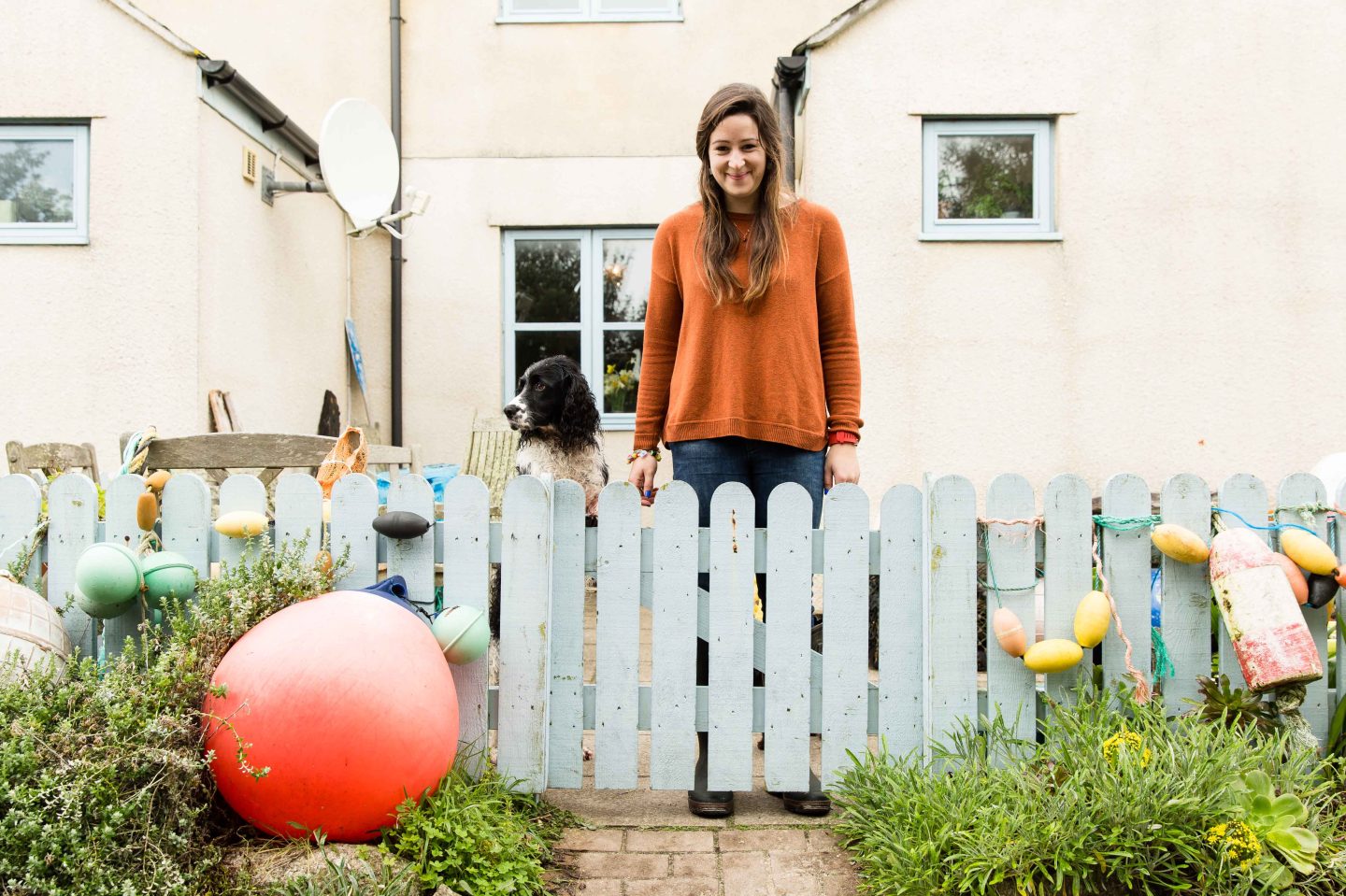
It’s not just the big names taking action either.
“There’s an increasingly popular movement called #2MinuteBeachClean,” explains Emma. “If everybody took just two minutes each day to pick up some litter from the beach it would make a huge difference.”
Emma photographs many of her beach finds, posting them on Instagram using #2MinuteBeachClean and joining a truly global movement. To date, over 55,000 finds have been logged.
“Sharing your finds online makes it quite addictive,” she says. “Meet me at Appletree tomorrow and I’ll show you.”
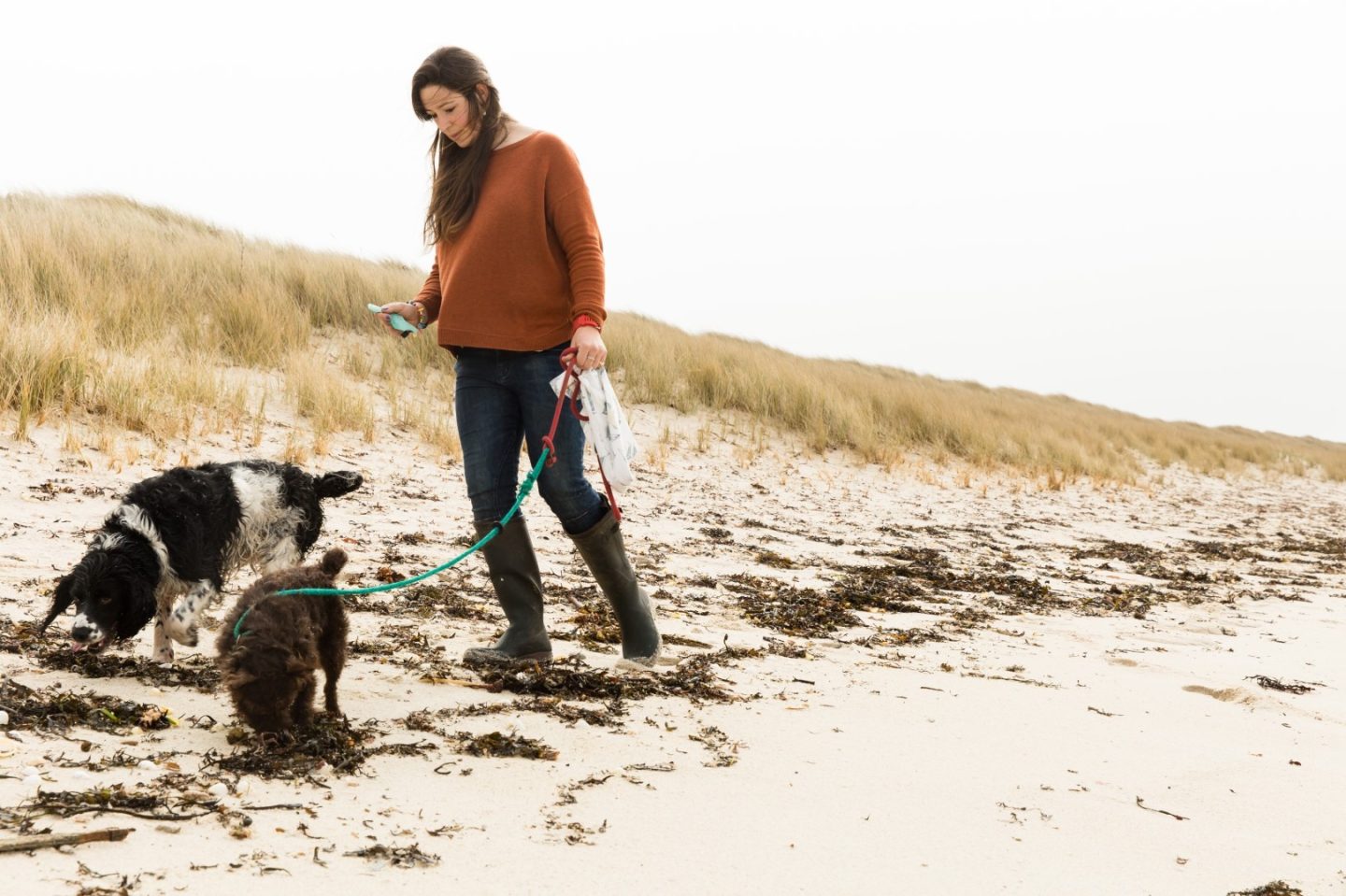
I meet Emma – accompanied by dogs Toby and Bandit – during her lunchtime stroll along Appletree Bay the next day. I can’t quite figure out why she’s suggested meeting here on this pristine beach to talk rubbish. There’s not a single piece of litter to be seen.
Emma sets off along the beach, leaning down every so often to rummage under seaweed or pluck an object from the sand. At first I look on, bemused, but after a while I join in. Once you start looking, there are tiny bits of driftwood, seaglass, old pottery and marine debris lurking under piles of seaweed, lodged in fissures between rocks, or hiding just beneath the surface of the sand.
During our amble along the beach we come across a plastic Martini lid, a strip of rubber tyre proudly emblazoned ‘Made in Czechoslovakia’ and a lobster trap tag which has journeyed over 2,500 miles from the fishing grounds of Nova Scotia.
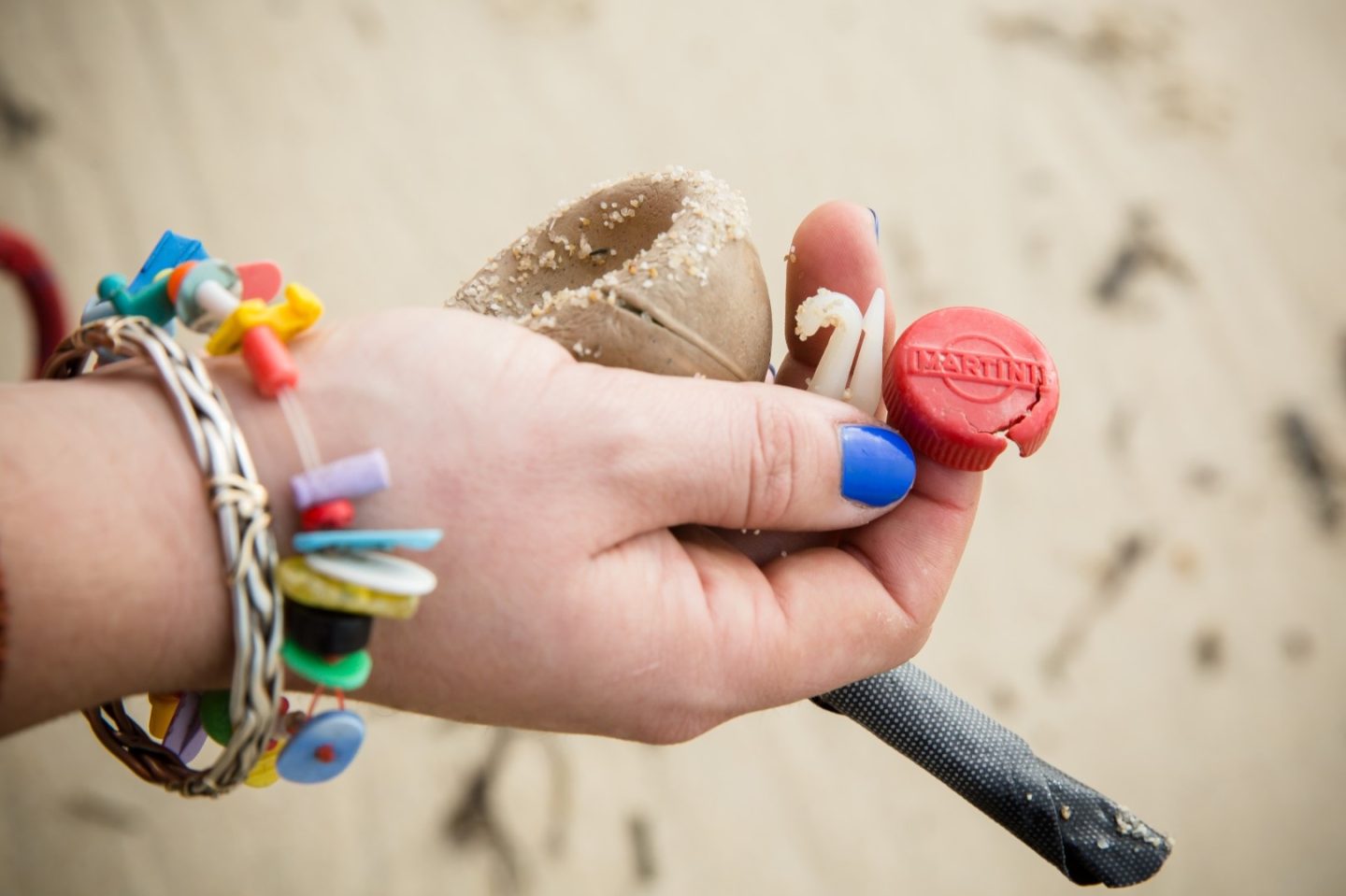
Some of Emma’s most interesting finds originate from high-profile cargo spills. She’s found pink and blue HP ink cartridges from a cargo spill in 2014, and Lego pieces from a container that crashed overboard off Land’s End in 1997.
It’s not all plastic filling Emma’s bag, though. Fishing net, rope, pottery, glass and wood all end up in Emma’s canvas bag. Emma keeps a particularly beady eye out for sea beans – actually seeds from across the world – considered lucky by fishermen and mariners.
And don’t get her started on Smarties lids… “I’m trying to collect the full alphabet,” Emma laughs. “You can learn a lot about Smarties lids! A capital letter means the lid predates the 1970s; a lid saying ‘Rowntrees’ rather than ‘Smarties’ is from before 1988; some lids which include words like ‘pass’ are from special themed tubes.” You learn something new every day…
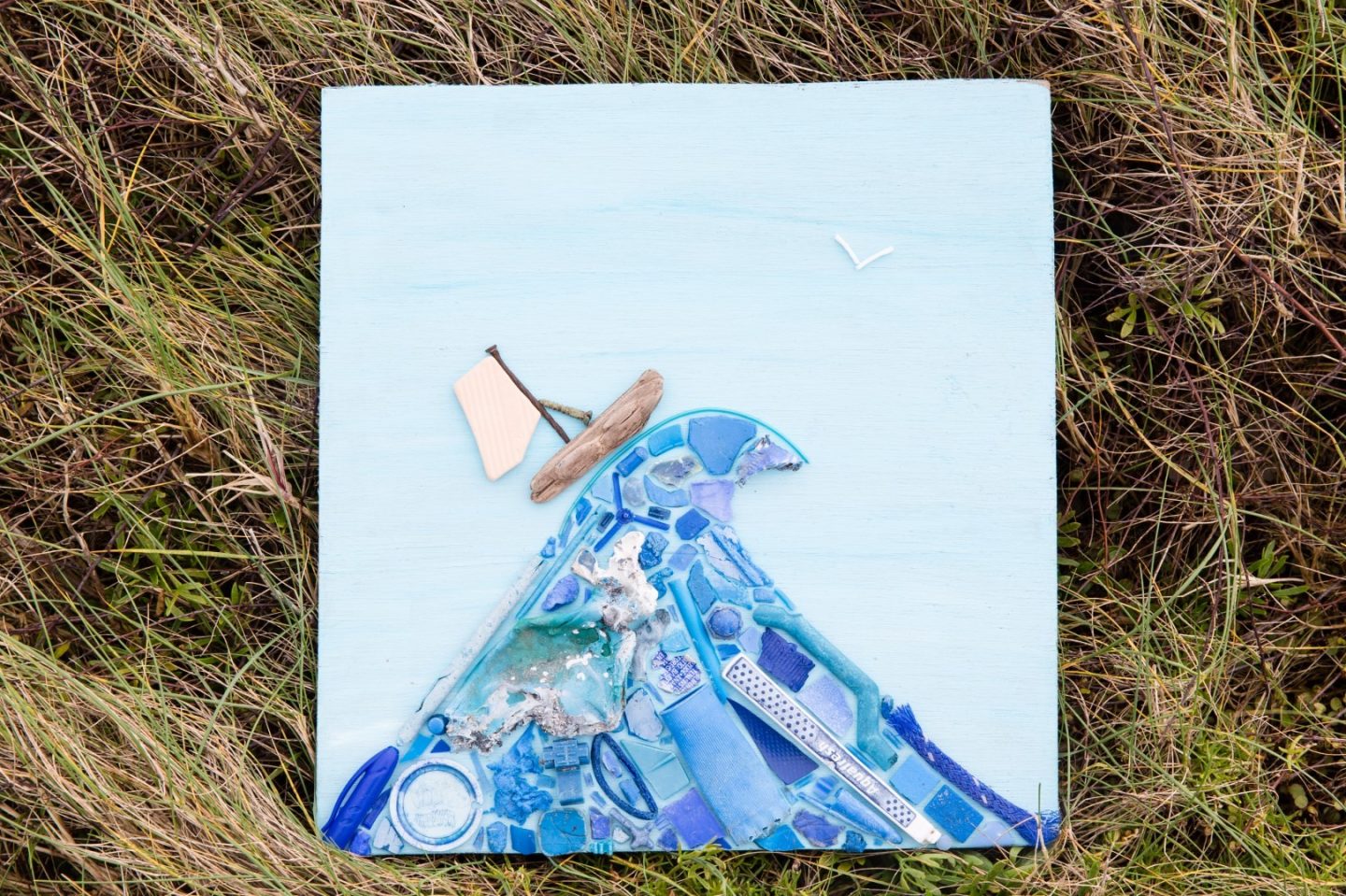
We’re interrupted by a loud splash as Toby the doe-eyed Spaniel bounds into what appears to be his natural habitat. “It’s the animals we need to do this for,” says Emma as Toby disappears off in the direction of Samson. “To a fish or a marine mammal, brightly coloured plastic looks temptingly like food. They don’t know the difference. We need to get this out of our oceans. Everyone needs to do their bit.”
By the end of the beach I’ve helped Emma fill her canvas bag with treasures; new media to take back to her kitchen table easel. Jon won’t be pleased…
Our #2MinuteBeachClean has run on a little and Emma must return to work, but I don’t want this to end. Emma is right: this is addictive. What if my next find is something never seen before? Who knew beach cleaning could be so fun?
“I’ll never change the world,” says Emma. “But if everyone who sees my art, who comes to Tresco, who strolls along the beach anywhere in the world – if they all just pick up a piece of debris here, or change their plastic usage there; that’s when you get real change.”
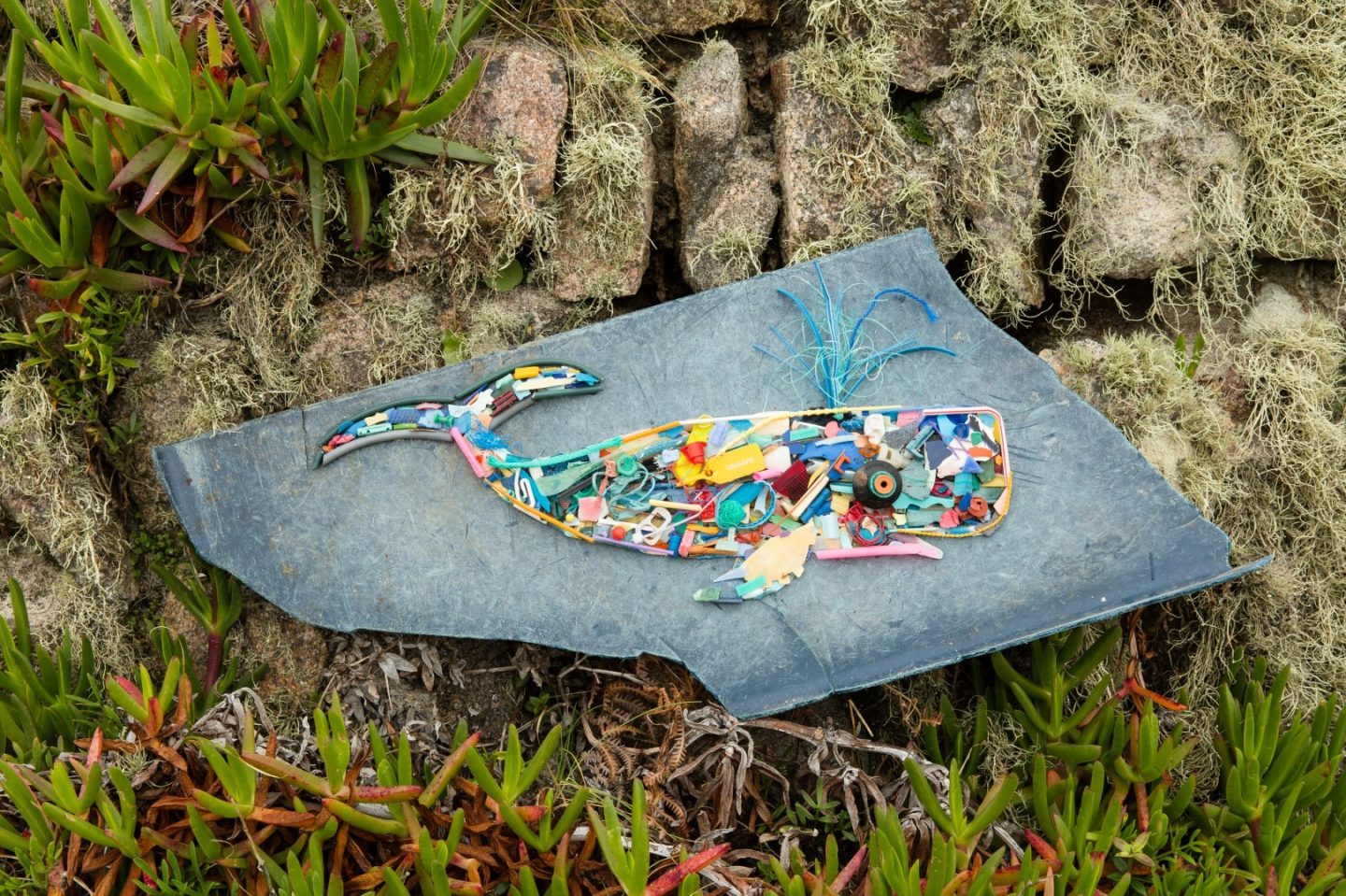
Sustainable Tresco
For almost 180 years, the stewardship of the Dorrien-Smith family has maintained Tresco’s natural beauty, and our dedication to preserving it continues today.
On Tresco Island we go to great lengths to ensure we reduce our environmental impact, including:
- From 2017, our restaurants no longer use single-use plastic straws (one of the worst polluters). We’ve replaced them with biodegradable straws.
- All plates, glasses and cutlery used at our outdoor events are biodegradable or recyclable. This is particularly important for events like the Low Tide Event.
- We operate an extensive recycling system across the island, and Tresco leads the way for recycling on the islands. Glass is crushed and used as aggregate for building on the island. Metal, plastic and polystyrene is shipped to the mainland for processing.
- Tresco Stores exclusively uses compostable and recyclable food packaging from London Bio Packaging, offers paper bags for fruit and vegetables and purchases all fruit and veg loose wherever possible.
- Tresco is one of the key partners in the Smart Islands Project, which aims to discover and deliver smart solutions to energy, waste, water and sewerage services on the Isles of Scilly and beyond.
- Plastic carrier bags have not been available in Tresco Stores for many years. Guests are provided with reusable bags within their cottage on arrival.
- Tresco has received an award for its environmental business practices and has formally signed up to the 10:10 campaign, committing to reduce its carbon emissions. The estate is a member of the Higher Level Stewardship Agreement with Natural England.
We also work closely with the Isles of Scilly Wildlife Trust to protect and enhance the natural environment on and around the islands. There are many other projects in the pipeline as we work towards reducing our environmental impact. Keep an eye out for further details...
